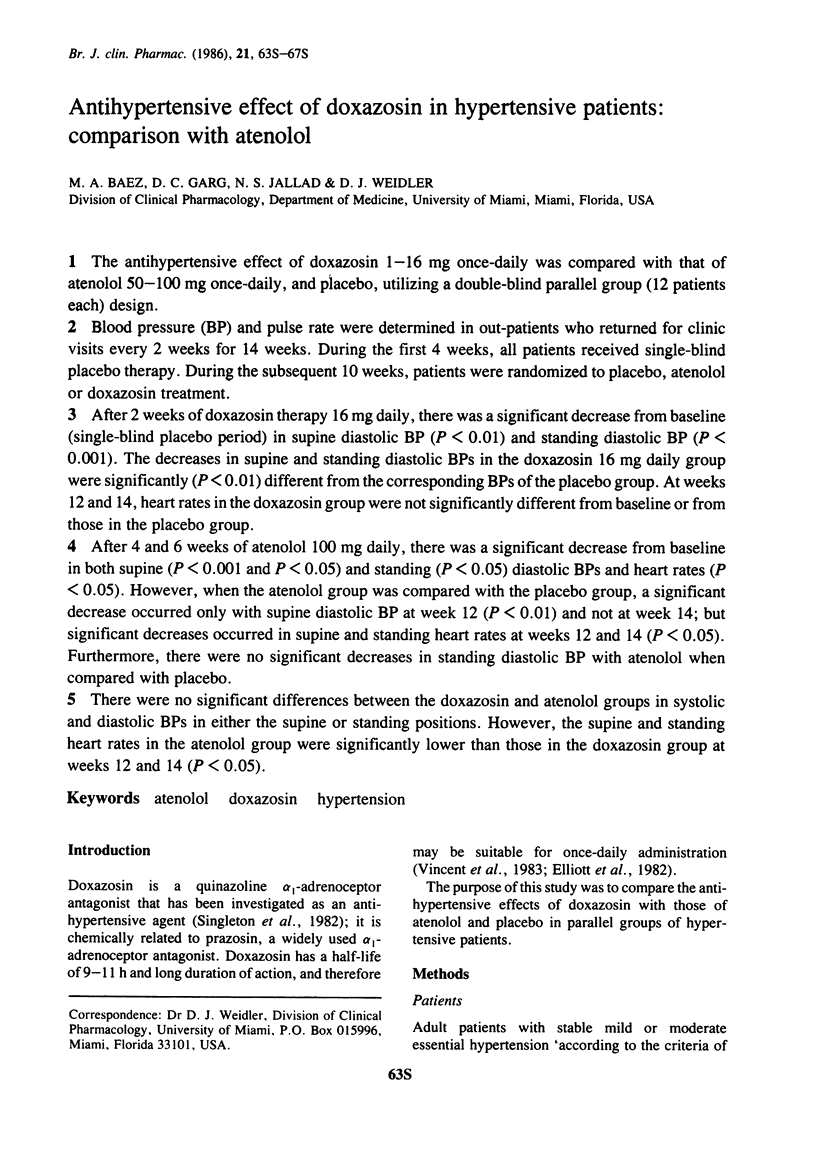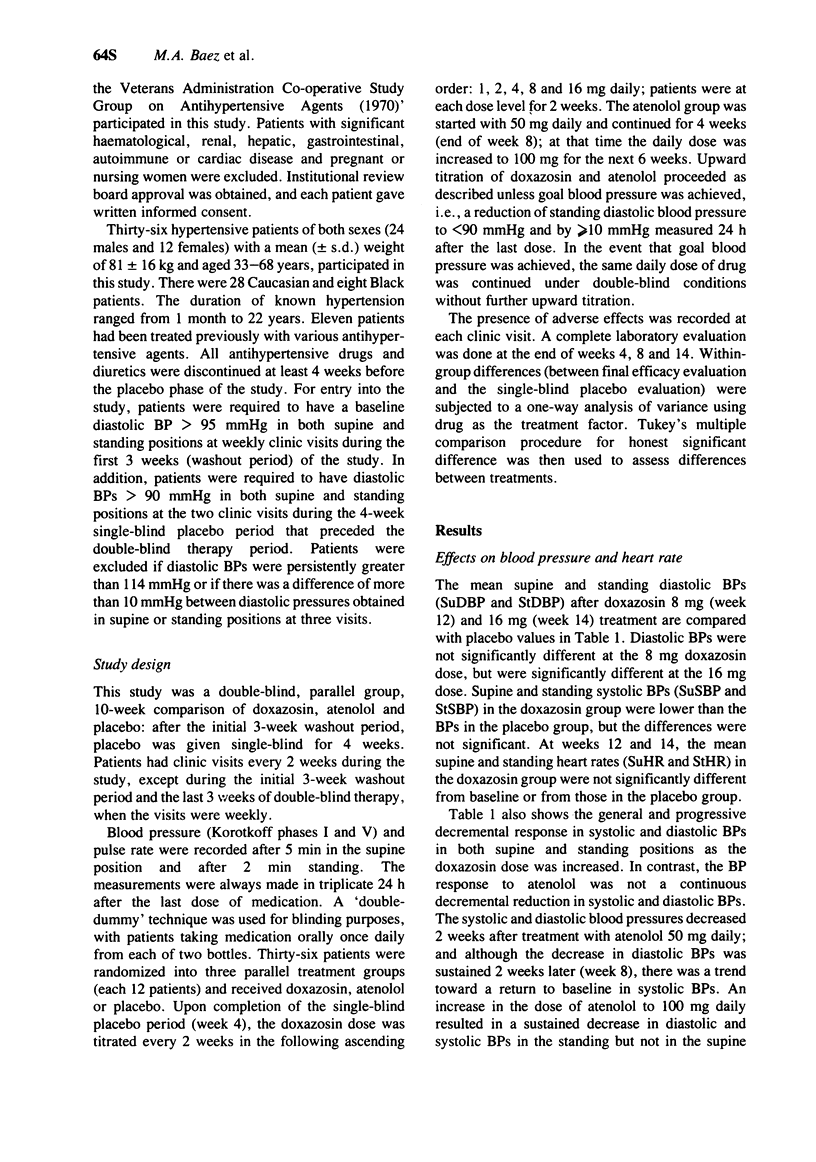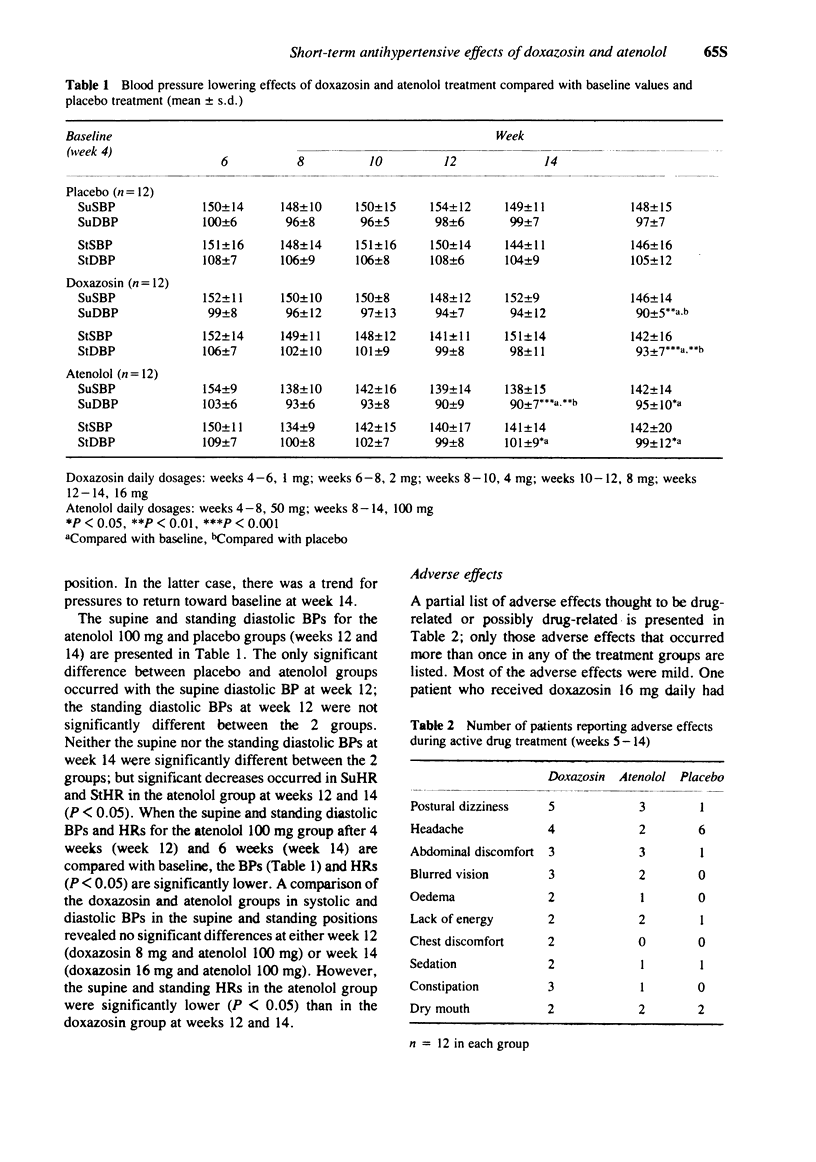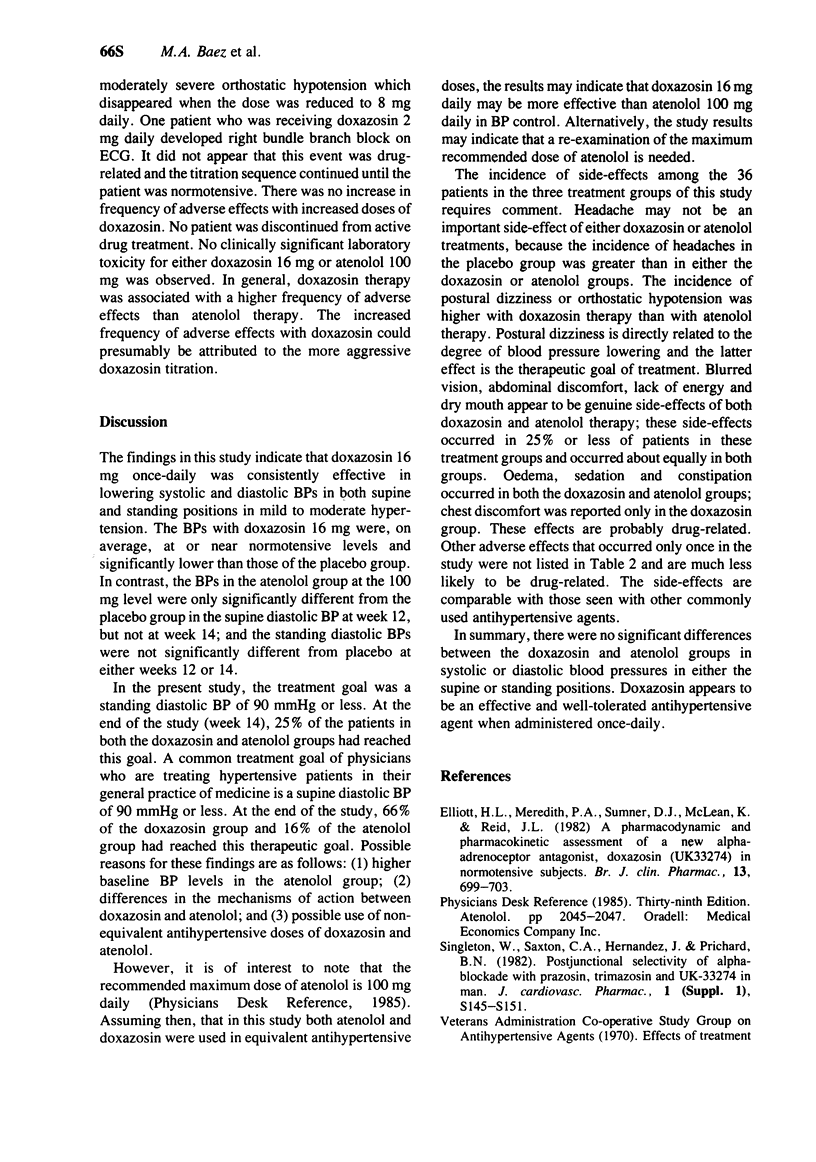Abstract
1 The antihypertensive effect of doxazosin 1-16 mg once-daily was compared with that of atenolol 50-100 mg once-daily, and placebo, utilizing a double-blind parallel group (12 patients each) design.
2 Blood pressure (BP) and pulse rate were determined in out-patients who returned for clinic visits every 2 weeks for 14 weeks. During the first 4 weeks, all patients received single-blind placebo therapy. During the subsequent 10 weeks, patients were randomized to placebo, atenolol or doxazosin treatment.
3 After 2 weeks of doxazosin therapy 16 mg daily, there was a significant decrease from baseline (single-blind placebo period) in supine diastolic BP (P < 0.01) and standing diastolic BP (P < 0.001). The decreases in supine and standing diastolic BPs in the doxazosin 16 mg daily group were significantly (P < 0.01) different from the corresponding BPs of the placebo group. At weeks 12 and 14, heart rates in the doxazosin group were not significantly different from baseline or from those in the placebo group.
4 After 4 and 6 weeks of atenolol 100 mg daily, there was a significant decrease from baseline in both supine (P < 0.001 and P < 0.05) and standing (P < 0.05) diastolic BPs and heart rates (P < 0.05). However, when the atenolol group was compared with the placebo group, a significant decrease occurred only with supine diastolic BP at week 12 (P < 0.01) and not at week 14; but significant decreases occurred in supine and standing heart rates at weeks 12 and 14 (P < 0.05). Furthermore, there were no significant decreases in standing diastolic BP with atenolol when compared with placebo.
5 There were no significant differences between the doxazosin and atenolol groups in systolic and diastolic BPs in either the supine or standing positions. However, the supine and standing heart rates in the atenolol group were significantly lower than those in the doxazosin group at weeks 12 and 14 (P < 0.05).
Keywords: atenolol, doxazosin, hypertension
Full text
PDF




Selected References
These references are in PubMed. This may not be the complete list of references from this article.
- Elliott H. L., Meredith P. A., Sumner D. J., McLean K., Reid J. L. A pharmacodynamic and pharmacokinetic assessment of a new alpha-adrenoceptor antagonist, doxazosin (UK33274) in normotensive subjects. Br J Clin Pharmacol. 1982 May;13(5):699–703. doi: 10.1111/j.1365-2125.1982.tb01439.x. [DOI] [PMC free article] [PubMed] [Google Scholar]
- Vincent J., Elliott H. L., Meredith P. A., Reid J. L. Doxazosin, an alpha 1-adrenoceptor antagonist: pharmacokinetics and concentration-effect relationships in man. Br J Clin Pharmacol. 1983 Jun;15(6):719–725. doi: 10.1111/j.1365-2125.1983.tb01556.x. [DOI] [PMC free article] [PubMed] [Google Scholar]


